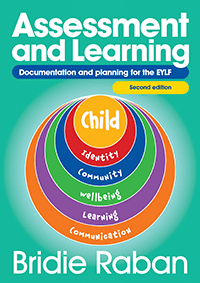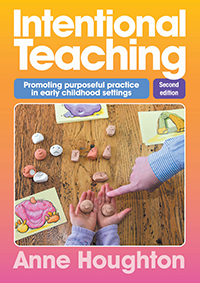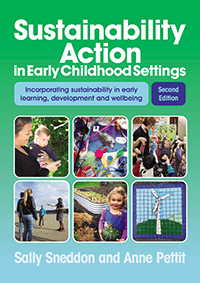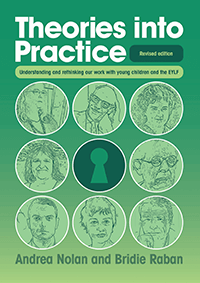Contents |
| Introduction | 5 |
| Principles | 5 |
| Practices | 5 |
| Why is this book necessary? | 6 |
| Ideas for using this book | 6 |
| For reflection | 7 |
| Belonging, being and becoming – a vision for children's learning | 8 |
| Maximising potential and developing foundations for the future | 9 |
| What is the United Nations Convention on the Rights of the Child? | 10 |
| What is the Alice Springs (Mparntwe) Education Declaration? | 12 |
| What is the Early Childhood Australia Code of Ethics? | 12 |
| For reflection | 12 |
| Principle 1: Secure, respectful and reciprocal relationships | 14 |
| What are secure, respectful and reciprocal relationships? | 14 |
| Key features | 15 |
| For reflection | 17 |
| Principle 2: Partnerships | 18 |
| What are partnerships? | 18 |
| Key features | 19 |
| For reflection | 21 |
| Principle 3: Respect for diversity | 22 |
| What is respect for diversity? | 22 |
| Key features | 23 |
| For reflection | 24 |
| Principle 4: Aboriginal and Torres Strait Islander perspectives | 25 |
| What is meant by embedding Aboriginal and Torres Strait Islander perspectives? | 25 |
| Key features | 26 |
| For reflection | 30 |
| Principle 5: Equity, inclusion and high expectations | 31 |
| What is meant by equity, inclusion and high expectations? | 31 |
| Key features | 32 |
| For reflection | 35 |
| Principle 6: Sustainability | 36 |
| What is sustainability? | 36 |
| Key features | 37 |
| For reflection | 40 |
| Principle 7: Critical reflection and ongoing professional learning | 41 |
| What is critical reflection and ongoing professional learning? | 41 |
| Key features | 42 |
| For reflection | 45 |
| Principle 8: Collaborative leadership and teamwork | 46 |
| What is collaborative leadership and teamwork? | 46 |
| Key features | 47 |
| For reflection | 50 |
| Practices underpinning the EYLF | 51 |
| Relating principles to practices | 51 |
| For reflection | 51 |
| Practice 1: Holistic, integrated and interconnected approaches | 52 |
| What are holistic, integrated and interconnected approaches? | 52 |
| Why are holistic, integrated and interconnected approaches important? | 53 |
| How are holistic, integrated and interconnected approaches implemented? | 53 |
| For reflection | 58 |
| Practice 2: Responsiveness to children | 59 |
| What is responsiveness to children? | 59 |
| Why is responsiveness to children important? | 60 |
| How is responsiveness to children implemented? | 61 |
| For reflection | 64 |
| Practice 3: Play-based learning and intentionality | 65 |
| What is play-based learning? | 65 |
| What is intentionality? | 66 |
| Why are play-based learning and intentionality important? | 67 |
| intentionality important? | 67 |
| For reflection | 73 |
| Practice 4: Learning environments | 74 |
| What are learning environments? | 74 |
| Why are learning environments important? | 75 |
| What do rich learning environments look like? | 75 |
| For reflection | 80 |
| Practice 5: Cultural responsiveness | 81 |
| What is cultural responsiveness? | 81 |
| Why is cultural responsiveness important? | 82 |
| How is cultural responsiveness implemented? | 82 |
| For reflection | 84 |
| Practice 6: Continuity of learning and transitions | 85 |
| What are continuity of learning and transitions? | 85 |
| Why are continuity of learning and transitions important? | 86 |
| How is continuity of learning and transitions supported? | 86 |
| For reflection | 90 |
| Practice 7: Assessment and evaluation for learning, development and wellbeing | 91 |
| What is assessment and evaluation for learning, development and wellbeing? | 91 |
| Why is assessment and evaluation for learning, development and wellbeing important? | 92 |
| What does assessment and evaluation for learning, development and wellbeing involve? | 93 |
| For reflection | 97 |
| Approaches for early childhood education and care | 98 |
| Montessori education | 98 |
| Steiner education | 99 |
| Reggio Emilia education | 100 |
| Principles in practice | 101 |
| For reflection | 101 |
| References and further reading | 102 |




